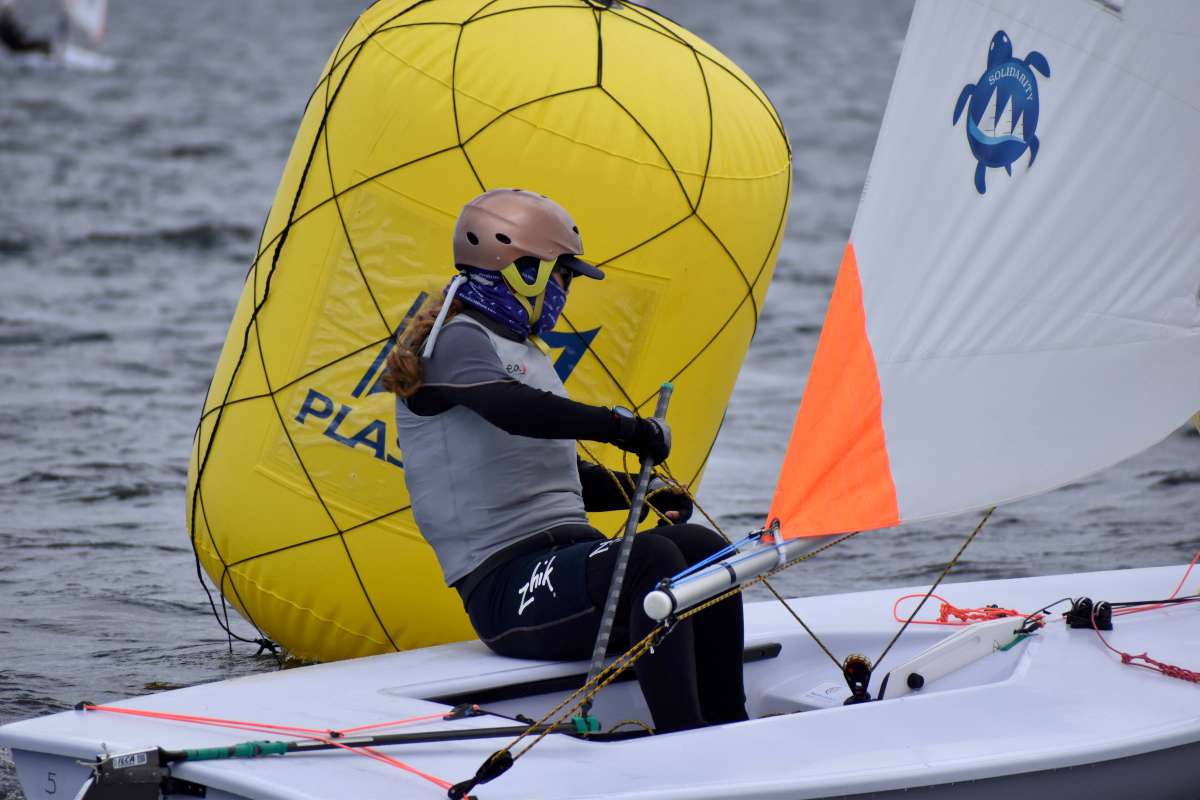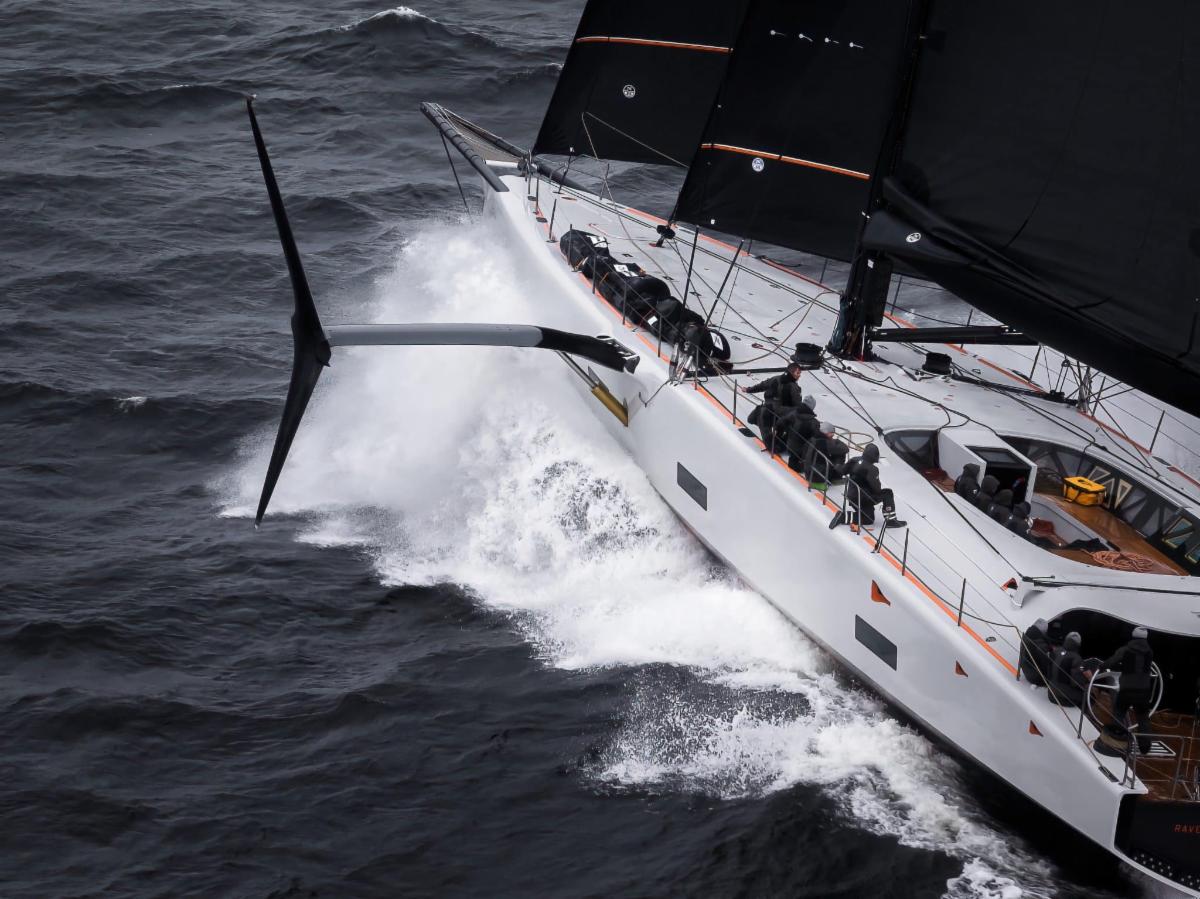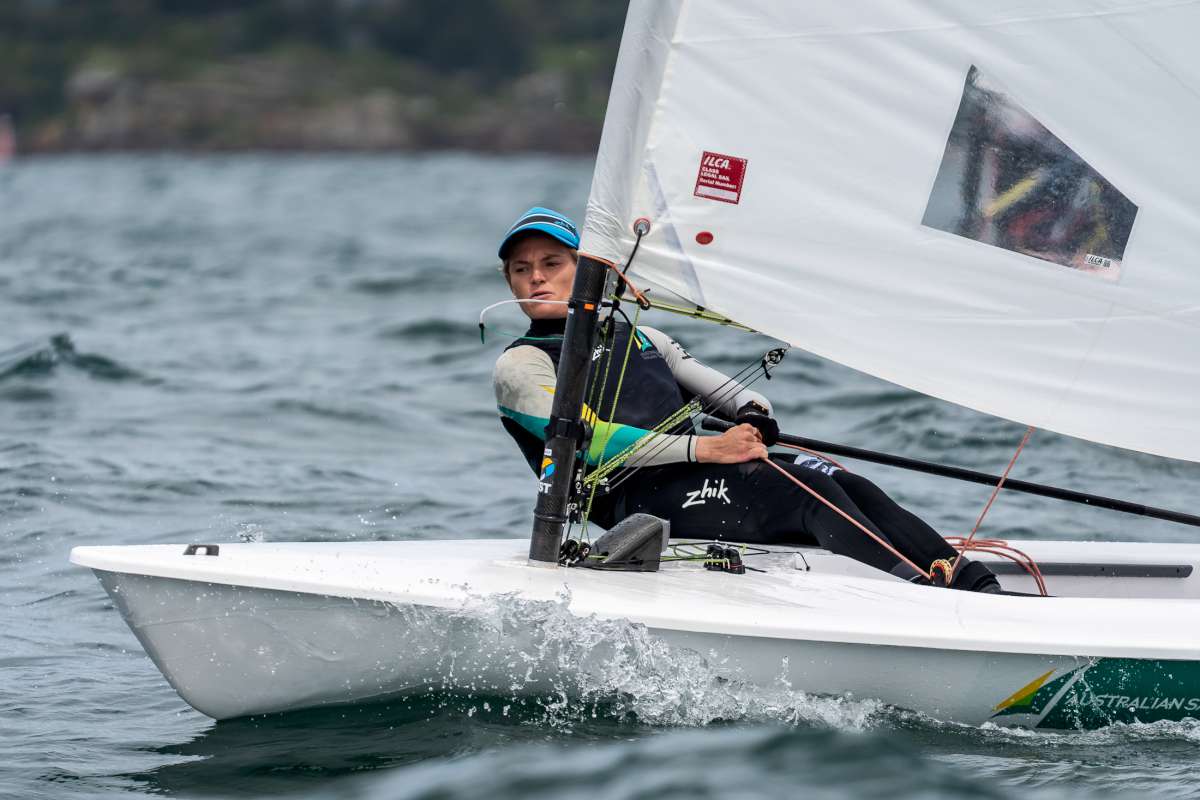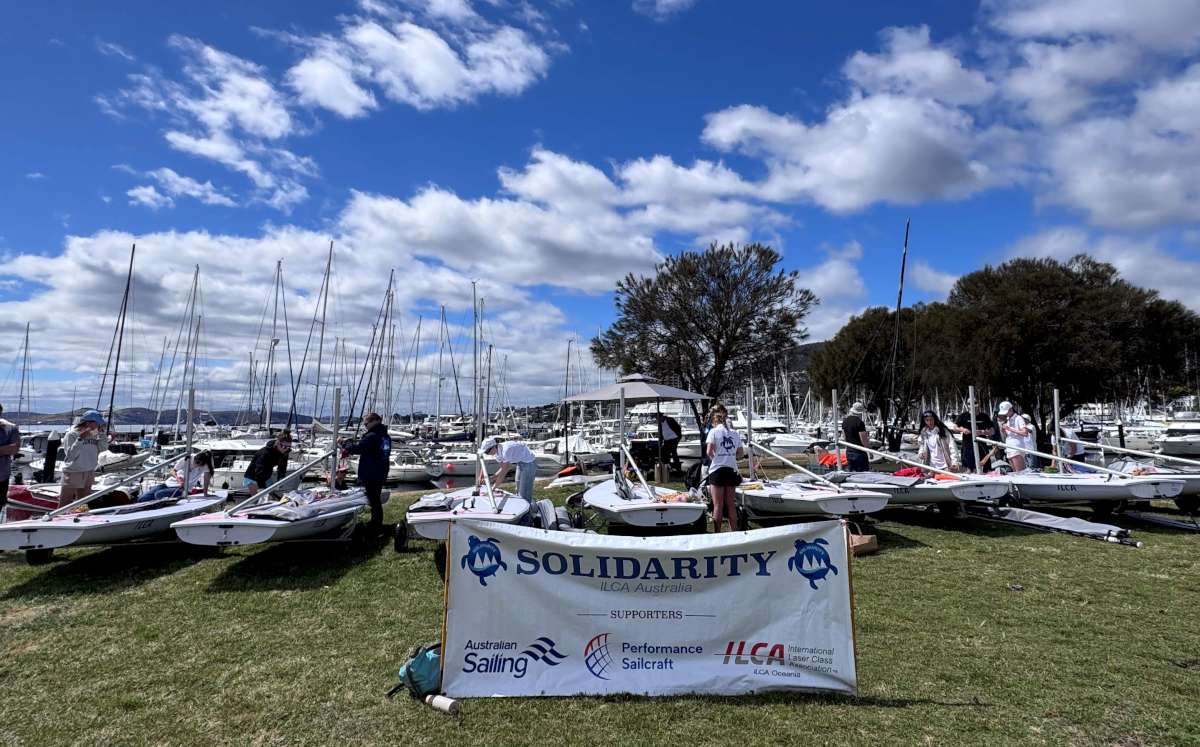Coastal sailors have it easy at haul-out time. They usually get the job done at a known facility in their home port.
Even the nomadic coastal cruiser will be familiar with, or have recommendations for the yard they are considering. But once we head out into unknown territory, we encounter a wide variety of boatyards, some excellent and some questionable.
To assist you to a trouble free haul-out wherever you go, Petrea McCarthy spoke with cruising sailor and Marine Surveyor Anthony Gates of Andaman Maritime Services in Phuket. Anthony compiled this guide to hauling out from his extensive experience with diverse boats and yards, including more than a few avoidable disasters.
Preparation
The basic planning for a haul-out begins during the previous one.
Note the details in your maintenance log: record the type of antifoul, how it was applied, how many coats and anything else that could possibly be relevant next time. Do not rely on memory because humans are great at forgetting unpleasant experiences.
Also list all other work done, like: changing anodes, replacing or servicing seacocks, repainting the boot top, and so on. With most boats, there will be jobs left over and these will form the basis of your to-do list for next time.
There is also the practical aspect to consider. Who will do the work? Will supplies be available on site, or should you prepurchase? Are you going to live aboard, or do you need to find other accommodation?
Timing
There is absolutely no point hauling out for a paint or osmosis job during the wet season with its 100% humidity and rain. However, if you choose to or need to haul-out when wet weather can be expected, consider whether a tent or tarpaulin will be required.
Insurance considerations
Insurance companies frequently require a survey of underwater surfaces and machinery on vessels over ten years old. Anthony often comes across owners who have just relaunched after their annual haul-out when the insurer requests an out of water survey before renewing the policy.
Also, be aware that some insurance policies do not cover ‘hot work’, like welding or grinding; plus some require notification of any major works, such as a refit, for example. Here is such a clause from one insurance company: “Excluding whilst under Refit or Repair other normal maintenance. Any hot work or major work during normal maintenance must be notified to Underwriters in advance. An additional terms and premium to be agreed.”
Apart from the dubious English involved, it is clear that you may not simply proceed with certain maintenance without the insurance company’s agreement.
Selecting a boat yard
Before choosing your boatyard, ask a few questions beyond the price.
Is the lift area subject to tides? When boats can only be hauled or launched within a small tidal window, any hold ups can translate to several days’ wait.
If you need to sneak into the yard on a high tide, will the tides be making or waning? Ensure that you can not only get in, but perhaps even more importantly, that you can leave without scraping your new antifouling.
Will you need to approach bow or stern first? With a travellift, also find out if you need to remove the backstay(s) or forestay. Having to take off parts of the rigging is routine if the boat is relatively large for the size of the travellift.
What is the hardstand surface? A cheaper rate for being on dirt or gravel may not be worthwhile if the boat ends up filthy. Dust can be a major issue if you want to apply any paint other than antifouling.
How will your boat be supported ashore? Adjustable cradles must support the boat at its pre-highlighted strong points.
For most, this is under the keel area or under the bulkheads. Cradles, stands, blocks and props must not be able to move, in relation to the boat or each other. If the boat can wobble at all, the whole support system can be jeopardised.
Apart from the basic charges, clarify: if the haulout charge is one-way or lift-and-return; whether electricity is charged separately and at what rate; plus whether pressure washing the hull attracts an extra charge.
Not all yards let you work on your own boat, so find out whether you will be allowed to do the work yourself. Alternatively, if you want the yard to do the work, what are the charges? Will you need to employ technicians or tradies? What are the insurance requirements?
Find out the insurance requirements. Some comprehensive policies have limited third party cover for marinas and boatyards. In Australia most boatyards and marinas require comprehensive.
Lastly, do they supply ladders or stairs? Some yards do not, to avoid insurance complications. This can be an issue for the travelling cruiser who does not have room to carry a long ladder around.
Now, what about your crew? What amenities are available? Even in the twenty-first century in Australia, at least one major yard does not have women’s showers. Whether or not they expect women to work on their boats, this is inconvenient for live-aboards.
Pros and cons of different haul out methods
The travellift is very common, particularly in Australia. The boat enters a dock between two arms, the machine manoeuvres over the boat and wide slings are passed under the hull. These are then winched up, lifting the boat vertically.
Once the boat is clear of the water, the machine trundles over to a wash down bay, then to an adjustable cradle, or a set of props. It is convenient for most boats, but does not support the centreline of the hull. This can be less than ideal for wooden boat.
The travellift obviously needs to be wider than the boat, which can be limiting, especially for multihulls. Less than a few centimetres clearance can be too stressful, and potentially damaging.
Travellifts slings can damage rubbing strips or rub rails, paintwork and antifouling, especially new antifouling. Poor positioning of the slings can cause hull pinching and damage to bulkheads. Ideally the machine will be wide enough that the sling angle is open enough not to compress the hull.
A hydraulic trailer is a large trailer with adjustable beams and supports. It is backed down a ramp under the hull, then the boat secured. It then moves forward, lifting the boat from the water much like a conventional boat trailer.
This set up is excellent for multihulls as it can support them by the beams with no crushing effect on the outer hulls. However, if the supports are not placed correctly, damage can occur.
Marina Bull Forklift is simply a large forklift with padded arms. Commonly used to lift small boats up to twelve tonnes. Similar disadvantages to the hydraulic trailer, but quick and easy for suitable boats.
The traditional slipway trolley is an adjustable cradle fitted to a marine railway. It is rolled into the water, the boat manoeuvred on to it, then pulled up until the keel begins to rest on the trolley bed.
As the boat comes further out of the water, the side arms are adjusted to support the boat upright, without crushing the hull. The weight of the boat is taken on its keel or centreline structure, with props underneath if required to keep it level fore and aft. Centreline blocks need to be adjusted to support the boat evenly, or damage can occur.
These trolleys are unsuitable for boats that are not designed to be supported by their keel, such as some modern racing yachts. Another disadvantage if the boat is being lifted for a survey is that, with the weight on the keel, it is not hanging for inspection of the keel-to-hull joint.
Boats with very short-chord keels do not sit well on such trolleys and can be prone to falling over if the keel slips, or falling on their nose.
Some yards use a simple trailer: a rubber-tyred version of a traditional slipway trolley.
Careening relies letting the boat dry out on a falling tide until the bottom is fully exposed. Limitations include insufficient drying time for painting; plus in some areas, cleaning marine growth is illegal.
The process will need repeating for the other side.
Where it is still legal, the advantage is that it is free. Careening can be useful for changing anodes, propellers, skin fittings or any other jobs that can be completed in a few hours.
Careening poles is a set of stout poles set in a shallow area to allow careening with the boat upright. These used to be common, but are less popular since the advent of fin keeled boats that tend to fall over longitudinally. Same legal issues as careening and the same advantages for quick under body jobs.
Crane – a large crane is manoeuvred over the boat, with slings passed under the hull. The crane jib is raised, or winch reeled in, to lift the boat ashore. Slings must be secured against movement, and spreader bars must be used to prevent crushing of the hull. Often the masthead instruments or mast itself are vulnerable to damage from the crane jib. Advantages are that cranes can be available in areas where there are no conventional boat yards. Disadvantages similar to the travel lift.
Once she’s out: blocking
Is the haul-out for a survey inspection? Do you need to be able to drop the rudder or keel? Will this be done by holding the boat high, or digging a hole?
-
block on bulkheads if possible every 3m (minimum of three blocks).
-
after blocking, rain water should naturally flow toward the drains. (not bow down)
-
blocks/chocks are to distribute load on the hull so should have maximum surface area with no point loading
-
jack stands or Acro props should hold the boat upright, but not support the weight of the vessel
-
jack stands or Acros should be chained together on most surfaces
-
access ladder should be secured at the top and safe to use
-
centreboards and daggerboards must be accessible when the boat is blocked
-
After blocking checks:
-
do doors and hatches open and close freely?
-
check bilges
-
check structural members
-
earthing/grounding the boat. Many boats are earthed through engines or shafts. For safety, a ground wire should be run from the earth point on the vessel to the ground.
Finally, time to launch
Do not relax just yet.
Ensure that the yard allows enough time after lifting to antifoul under supports.
This is commonly overlooked and the boat ends up with several poorly antifouled patches.
Are there drain plugs or bungs you need to replace before launching?
Once she’s back in:
-
turn seacocks on
-
check all transducers, through hulls and hoses
-
check and monitor the shaft seal
-
check the bilges
-
bleed up engines, genset and air conditioning units
-
monitor bilges.
Review
To prevent damage, know your boat and ensure the yard is fully aware of your boat’s requirements before they lift it.
Here is Anthony’s pre-lifting checklist:
- supply the yard with photos of previous lifts and, if available, the manufacturer’s instructions for lifting
- mark the safe lifting points so they are clearly visible to the machine operator
- know the bulkhead locations
- make the boat as light as possible by emptying tanks and removing heavy items like tenders and anchor tackle
- check the position of the lifting apparatus in relation to drive gear: shafts, propellers and sail drive legs etc.; plus transducers, through-hulls with strainers and stabilisers or fins.
- remove paddle wheel transducers. Dive on the boat before lifting if necessary to be certain everything is clear
- turn off the seacocks
- ensure the vessel isn’t held for too long before being supported or blocked
- on cranes and travellifts, add padding near the rub rail to distribute the load
- reduce windage and weight aloft. This is particularly important if the boat is dry-stored during cyclone/hurricane/typhoon season. Consider removing the mast and storing it separately. At the least, secure furled sails so there is no possibility of them unfurling
- on relaunching, consider wrapping travellift slings or putting plastic between the slings and hull to minimise damage to new antifouling. Make sure these are taped on so they don’t end up in the water.
- documentation for possible evidence should something go wrong, take photos or video before, during, and after the lift.
≈
























